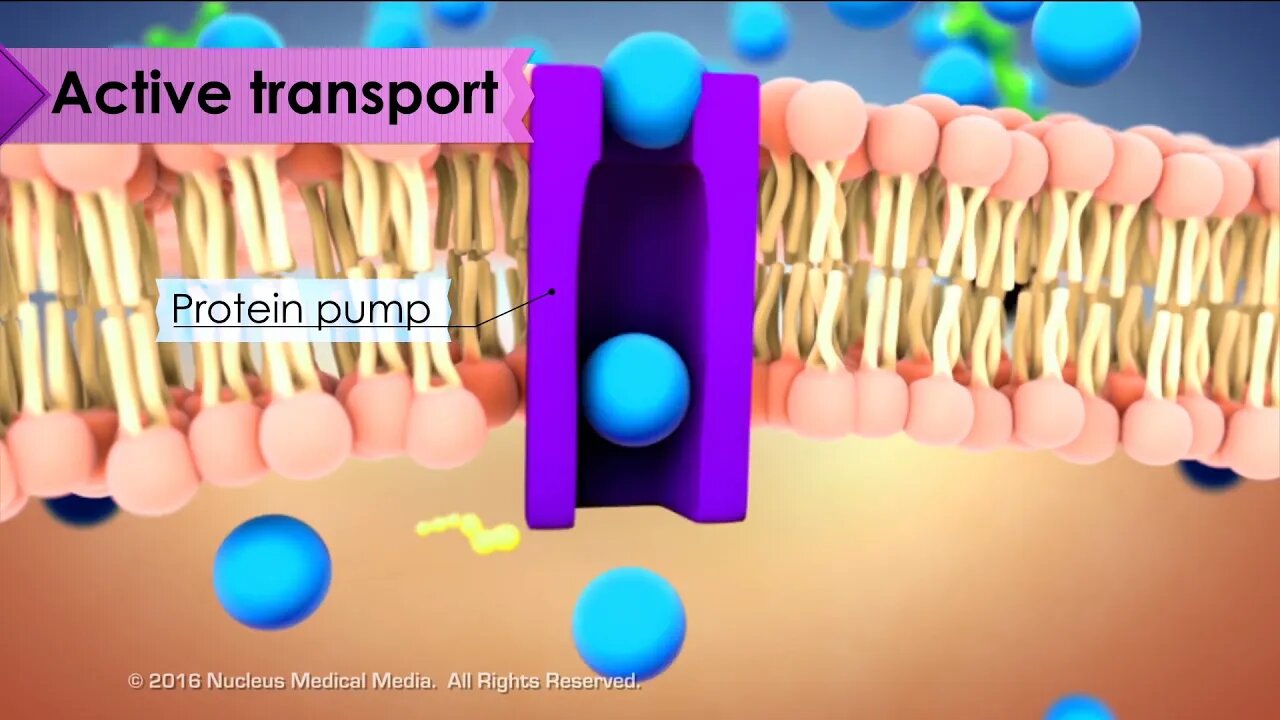Premium Only Content

Overview of Cell Transport
For Employees of hospitals, schools, universities and libraries: download up to 8 FREE medical animations from Nucleus by signing up for a free trial at: http://nmal.nucleusmedicalmedia.com/biology_youtube
SCIENCE ANIMATION TRANSCRIPT: Cell transport is the process of how things move in or out of the cell through the cell membrane. There are two broad categories of cell transport. The first category is passive transport. For a cell, passive transport means it's an automatic process that doesn't require any input of energy. For example, diffusion is a passive process in which particles move either into or out of the cell from an area of higher concentration to an area of lower concentration. The cell doesn't use any energy when this happens. The second category of cell transport is active transport. This is when particles move from an area of lower concentration to an area of higher concentration. When particles move against the concentration gradient, energy is required often to allow protein pumps to assist in particle movement. Why would the cell need to move particles from a low to high concentration and expend energy to do it? An important example is seen in your heart muscle cells. In order for your heart to beat, there are certain molecules that have to move from an area of low concentration to an area of high concentration for those cardiac muscle cells to work. So, the main things to remember are passive transport happens automatically with no energy required, while active transport needs energy for it to occur. [music]
NSV15007
-
 UPCOMING
UPCOMING
The Big Mig™
3 hours agoMiddle East Meltdown, We All Lose
1813 -
 LIVE
LIVE
Caleb Hammer
33 minutes agoDave Ramsey Was Wrong, Now She's F*cked | Financial Audit
94 watching -
 35:36
35:36
Rethinking the Dollar
1 hour agoBombs Drop, Stocks Flop & GOLD Tops | Morning Check-In
159 -
 1:07:59
1:07:59
Dear America
2 hours agoWW3?! Israel STRIKES Iran!! + Judge BLOCKS Trumps National Guard In LA!! WHAT IS HAPPENING‼️
78.1K164 -
![🔴[LIVE] Markets Plummet, Breaking News & Payday Friday || The MK Show](https://1a-1791.com/video/fww1/7b/s8/1/H/N/V/S/HNVSy.0kob-small-The-MK-Show-June-13th.jpg) LIVE
LIVE
Matt Kohrs
10 hours ago🔴[LIVE] Markets Plummet, Breaking News & Payday Friday || The MK Show
821 watching -
 LIVE
LIVE
Badlands Media
8 hours agoBadlands Daily: June 13, 2025
5,065 watching -
 16:31
16:31
Bearing
2 hours agoDr. Phil SPITS FACTS at Woke Leftist Losers “We are a Country of Laws” ⚡💥
6.82K26 -
 2:30:06
2:30:06
Chicks On The Right
5 hours agoIsrael strikes Iran, Padilla creates circus, Dem Govs get grilled, Gavin's emotional rollercoaster
33.2K9 -
 4:01:21
4:01:21
The Bubba Army
1 day agoIsrael SMASHES Iran! - Bubba the Love Sponge® Show | 6/13/25
105K52 -
 47:25
47:25
Friday Beers
15 hours ago $4.39 earnedWe Accidentally Unleashed a Skeleton Army in D&D
51.7K5